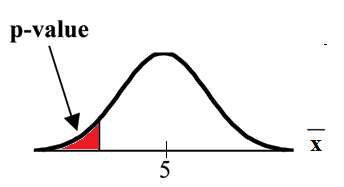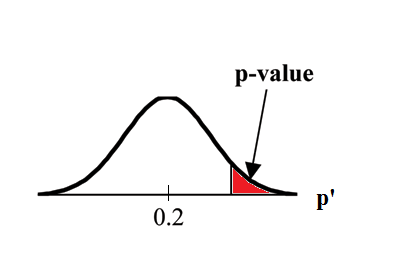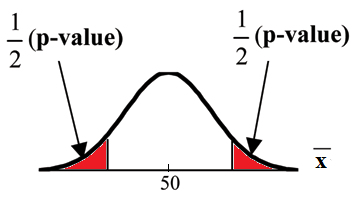-
Home
- Quantitative information analysis
- Hypothesis testing: single mean
- Additional information
- In a
hypothesis test problem, you may see words such as "the level of significance is
1%." The "1%" is the preconceived or preset
.
- The statistician setting up the hypothesis test selects the value of
to use
before collecting the sample data.
-
If no level of significance is given, the accepted standard is to use
.
- When you calculate the
p-value and draw the picture, the p-value is the area in the left tail,
the right tail, or split evenly between the two tails. For this reason, we call thehypothesis test left, right, or two tailed.
- The
alternate hypothesis ,
, tells you if the test is left, right, or two-tailed.
It is the
key to conducting the appropriate test.
-
never has a symbol that contains an equal sign.
-
Thinking about the meaning of the
p-value : A data analyst (and anyone else) should have more confidence that he made the correct decision to reject the null hypothesis with a smaller p-value (for example, 0.001 as opposed to 0.04) even if using the 0.05 level for alpha. Similarly, for a large p-value like 0.4, as opposed to a p-value of 0.056 (alpha = 0.05 is less than either number), a data analyst should have more confidence that she made the correct decision in failing to reject the null hypothesis. This makes the data analyst use judgment rather than mindlessly applying rules.
The following examples illustrate a left, right, and two-tailed test.
:
:
Test of a single population mean.
tells you the test is left-tailed. The picture of the p-value is as follows:

:
:
This is a test of a single population proportion.
tells you the test is
right-tailed . The picture of the p-value is as follows:

:
:
This is a test of a single population mean.
tells you the test is
two-tailed . The picture of the p-value is as follows.

Source:
OpenStax, Quantitative information analysis iii. OpenStax CNX. Dec 25, 2009 Download for free at http://cnx.org/content/col11155/1.1
Google Play and the Google Play logo are trademarks of Google Inc.



